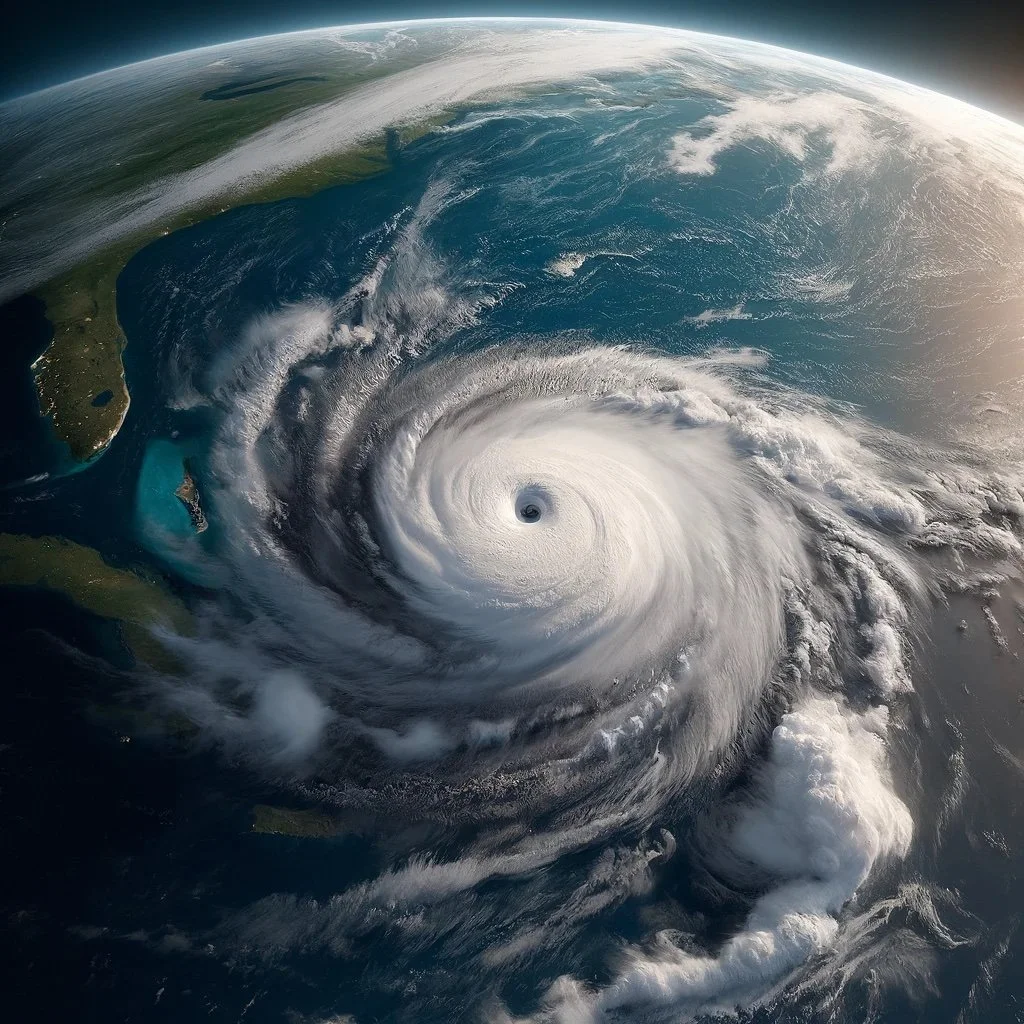2024 Hurricane Season Forecast: An In-Depth Analysis
Image of a hurricane tracking towards The Bahamas, Florida
As the 2024 Atlantic hurricane season approaches, scientists and meteorologists are closely monitoring climate patterns to predict the potential intensity and impact of the upcoming season. Understanding these forecasts is crucial for coastal communities and governments to prepare and mitigate the effects of possible hurricanes. This article delves into the 2024 hurricane season forecast, exploring the roles of El Niño and La Niña, current climate conditions, and predictions from leading experts in the field.
Background on El Niño and La Niña
El Niño and La Niña are significant climate phenomena that influence weather patterns worldwide, including the Atlantic hurricane season.
El Niño refers to the periodic warming of sea surface temperatures in the central and eastern Pacific Ocean. This warming disrupts atmospheric conditions, typically leading to increased vertical wind shear over the Atlantic. This wind shear can tear apart developing storms, resulting in fewer and weaker hurricanes.
La Niña, on the other hand, is characterized by cooler sea surface temperatures in the same regions of the Pacific. This cooling reduces vertical wind shear over the Atlantic, creating a more favorable environment for hurricane development and intensification. As a result, La Niña years often see an increase in both the number and strength of hurricanes.
Current Climate Conditions 2024
The 2024 hurricane season is expected to be heavily influenced by the transition from El Niño to La Niña conditions. Currently, sea surface temperatures in the Main Development Region (MDR) of the Atlantic, which spans from Africa to Central America, are significantly above average. This warming is a critical factor, as higher sea surface temperatures provide more energy for storm formation.
According to the National Oceanic and Atmospheric Administration (NOAA), the current El Niño event is weakening and is expected to dissipate by June. There is a 62% chance that La Niña conditions will develop during the early portion of the hurricane season (June-August) and continue through the peak months (August-October). This transition is anticipated to lead to a more active hurricane season.
Hurricane Forecast Details for 2024
Leading forecasting agencies, including Colorado State University (CSU) and NOAA, have provided detailed predictions for the 2024 hurricane season:
Colorado State University (CSU): The CSU forecast predicts a highly active season with 23 named storms, 11 hurricanes, and 5 major hurricanes. This forecast is based on a combination of statistical models and real-world analog years with similar climate conditions.
NOAA: NOAA's outlook aligns with CSU's predictions, emphasizing the likelihood of an above-average season due to the anticipated La Niña conditions and warm sea surface temperatures in the MDR.
Key factors influencing these forecasts include:
Sea Surface Temperatures (SSTs): Warmer-than-average SSTs in the MDR provide the necessary energy for hurricane formation and growth.
Atmospheric Conditions: Reduced vertical wind shear and favorable atmospheric moisture levels contribute to the development and intensification of storms.
Analogue Years
To enhance the accuracy of their predictions, forecasters often look at analogue years—previous years with similar climate conditions. For 2024, five analogue years were identified: 1878, 1926, 1998, 2010, and 2020. These years were characterized by El Niño conditions in the preceding winter, followed by La Niña during the peak hurricane season, and much above-average SSTs in the tropical Atlantic early in the year.
1878: 12 named storms, 10 hurricanes, 2 major hurricanes
1926: 11 named storms, 8 hurricanes, 6 major hurricanes
1998: 14 named storms, 10 hurricanes, 3 major hurricanes
2010: 19 named storms, 12 hurricanes, 5 major hurricanes
2020: 30 named storms, 14 hurricanes, 7 major hurricanes
The average activity for these years included 17 named storms, 11 hurricanes, and 5 major hurricanes, indicating extremely high levels of activity. While the forecast models suggest a hyperactive season, the real-world analog years provide a slightly more tempered outlook.
Potential Hurricane Impacts
The expected active hurricane season could have significant implications for coastal areas, especially those in the Atlantic basin. Increased storm activity raises the risk of landfalling hurricanes, which can cause extensive damage to infrastructure, ecosystems, and communities. Coastal preparedness is paramount, and authorities are urging residents to stay informed and ready for potential evacuations and emergency measures.
Differing Viewpoints
While the consensus among major forecasting groups points to an active season, there are always uncertainties and differing opinions in climate science. Some experts may emphasize the unpredictability of weather patterns and the potential for sudden changes in atmospheric conditions that could alter the season's outcome. However, the general agreement supports the expectation of heightened hurricane activity in 2024.
2024 Hurricane Season Forecast Overall
The 2024 Atlantic hurricane season is shaping up to be exceptionally active, driven by the transition from El Niño to La Niña and warmer-than-average sea surface temperatures. Forecasts from CSU and NOAA predict an above-average number of named storms, hurricanes, and major hurricanes. Coastal communities must heed these warnings, prepare adequately, and stay informed throughout the season to mitigate the potential impacts of this heightened hurricane activity.
By understanding the forecast and the factors driving it, individuals and governments can take proactive steps to protect lives and property. As the season progresses, continuous monitoring of updates and preparedness measures will be crucial in navigating the challenges posed by an active hurricane season.
References
Colorado State University Hurricane Forecast
NOAA Hurricane Outlook
Historical Hurricane Data
Sea Surface Temperature Analysis
Climate Prediction Center Reports


